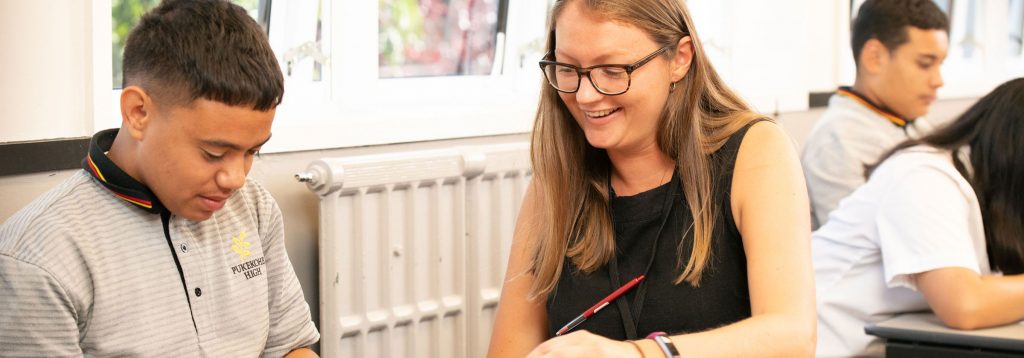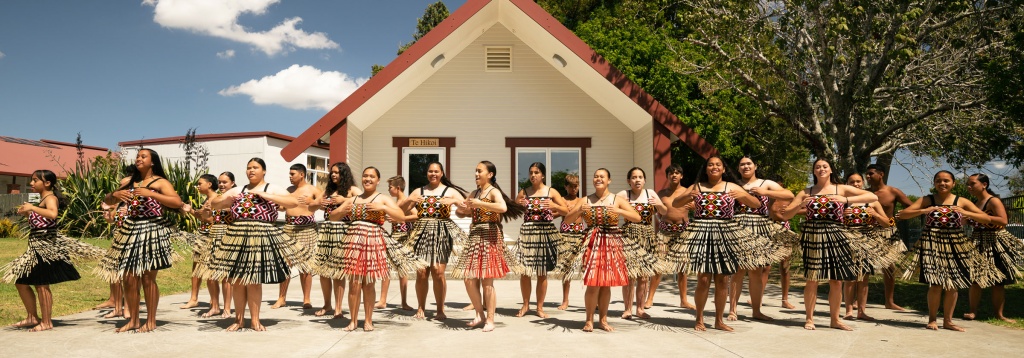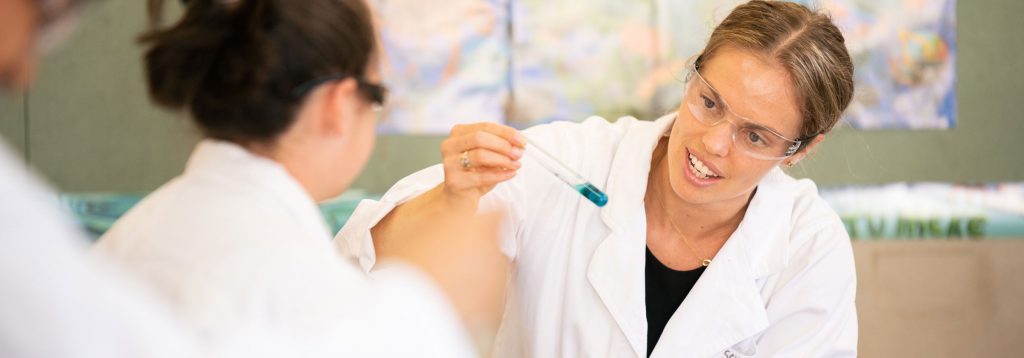
Arts
Te toi whakairo, ka ihiihi, ka wehiwehi,
ka aweawe te ao katoa.
The arts are powerful forms of expression that recognise, value, and contribute to the unique bicultural and multicultural character of Aotearoa New Zealand, enriching the lives of all New Zealanders. The arts have their own distinct languages that use both verbal and non-verbal conventions, mediated by selected processes and technologies. Through movement, sound, and image, the arts transform people’s creative ideas into expressive works that communicate layered meanings. (The New Zealand Curriculum Document).
Documents
About The Arts
Possible Future Pathways
Dance & Drama
Acting, teaching, theatre producer/assistant, comedian, director, promoter, production management, events management, performer, technician – sound, lighting, costume, make-up, stage and set design, choreographer, communications, film and television, dancer, model, radio, orator, vlogging, multi-media presentations, live marketing, promotions.
Music
Performer, singer/musician, composer, tutor, promoter, events management, teaching, music therapy, radio, recording, sound technician/engineering, music production, directing, touring, mangement, theatre.
Art
Animation, gaming, artist, photography, artistic director, teaching, illustrator, designer (print, marketing, product, digital, fashion, interiors, textiles), architercture, interior design, spatial design, web design, film and television, moving image work, curator, gallery work, art restoration, art historian, art investor, arts therapy, theatre/movie set design, costume design, special effects, multi-media artist, visual and creative communications fields, advertising.
Why study the Arts?
Arts education explores, challenges, affirms, and celebrates unique artistic expressions of self, community, and culture. It embraces toi Maori, valuing the forms and practices of customary and contemporary Maori performing, musical, and visual arts.
Learning in, through, and about the arts stimulates creative action and response by engaging and connecting thinking, imagination, senses, and feelings. By participating in the arts, students’ personal well-being is enhanced. As students express and interpret ideas within creative, aesthetic, and technological frameworks, their confidence to take risks is increased. Specialist studies enable students to contribute their vision, abilities, and energies to arts initiatives and creative industries.
In the arts, students learn to work both independently and collaboratively to construct meanings, produce works, and respond to and value others’ contributions. They learn to use imagination to engage with unexpected outcomes and to explore multiple solutions.
Arts education values young children’s experiences and builds on these with increasing sophistication and complexity as their knowledge and skills develop. Through the use of creative and intuitive thought and action, learners in the arts are able to view their world from new perspectives. Through the development of arts literacies, students, as creators, presenters, viewers, and listeners, are able to participate in, interpret, value, and enjoy the arts throughout their lives.
How is the learning area structured?
The arts learning area comprises four disciplines: dance, drama, music – sound arts, and visual arts. Within each, students develop literacies as they build on skills, knowledge, attitudes, and understandings at each of the eight levels of the curriculum. Through arts practices and the use of traditional and new technologies, students’ artistic ideas are generated and refined through cycles of action and reflection.
Each discipline is structured around four interrelated strands: Understanding the Arts in Context, Developing Practical Knowledge in the arts, Developing Ideas in the arts, and Communicating and Interpreting in the arts. The achievement objectives for each discipline reflect its distinct body of knowledge and practices. By building on and revisiting learning from previous levels, arts programmes in each discipline provide progressions of learning opportunities in all four strands. This spiral process ensures that students’ learning is relevant, in-depth, and meaningful.
Over the course of years 1–8, students will learn in all four disciplines. Over the course of years 9–10, they will learn in at least two. Students in years 11–13 may specialise in one or more of the disciplines or undertake study in multimedia and other new technologies.
Dance
Dance is expressive movement that has intent, purpose, and form. In dance education, students integrate thinking, moving, and feeling. They explore and use dance elements, vocabularies, processes, and technologies to express personal, group, and cultural identities, to convey and interpret artistic ideas, and to strengthen social interaction. Students develop literacy in dance as they learn about, and develop skills in, performing, choreographing, and responding to a variety of genres from a range of historical and contemporary contexts.
Drama
Drama expresses human experience through a focus on role, action, and tension, played out in time and space. In drama education, students learn to structure these elements and to use dramatic conventions, techniques, and technologies to create imagined worlds. Through purposeful play, both individual and collaborative, they discover how to link imagination, thoughts, and feelings.
As students work with drama techniques, they learn to use spoken and written language with increasing control and confidence and to communicate effectively using body language, movement, and space. As they perform, analyse, and respond to different forms of drama and theatre, they gain a deeper appreciation of their rich cultural heritage and language and new power to examine attitudes, behaviours, and values.
By means of the drama that they create and perform, students reflect and enrich the cultural life of their schools, whanau, and communities.
Music – Sound Arts
Sound from natural, acoustic, and digital environments is the source material for expressive ideas in music. These ideas are manipulated and extended into forms, genres, and styles that are recognised as music. Music is a fundamental form of expression, both personal and cultural. Value is placed upon the musical heritages of New Zealand’s diverse cultures, including traditional and contemporary Maori musical arts. By making, sharing, and responding to music, students contribute to the cultural life of their schools, whanau, peer groups, and communities. As they engage with and develop knowledge and deeper understandings of music, they draw on cultural practices and on histories, theories, structures, technologies, and personal experiences.
In music education, students work individually and collaboratively to explore the potential of sounds and technologies for creating, interpreting, and representing music ideas. As they think about and explore innovative sound and media, students have rich opportunities to further their own creative potential.
Students develop literacies in music as they listen and respond, sing, play instruments, create and improvise, read symbols and notations, record sound and music works, and analyse and appreciate music. This enables them to develop aural and theoretical skills and to value and understand the expressive qualities of music.
As students learn to communicate musically with increasing sophistication, they lay a foundation for lifelong enjoyment of and participation in music. Some will go on to take courses in musicology, performance, or composition. These may be steps on the way to music-related employment.
Visual Arts
Through engaging in the visual arts, students learn how to discern, participate in, and celebrate their own and others’ visual worlds. Visual arts learning begins with children’s curiosity and delight in their senses and stories and extends to communication of complex ideas and concepts. An understanding of Maori visual culture is achieved through exploration of Maori contexts. The arts of European, Pasifika, Asian, and other cultures add significant dimensions to New Zealand visual culture.
In visual arts education, students develop visual literacy and aesthetic awareness as they manipulate and transform visual, tactile, and spatial ideas to solve problems. They explore experiences, stories, abstract concepts, social issues, and needs, both individually and collaboratively. They experiment with materials, using processes and conventions to develop their visual enquiries and create both static and time-based art works. They view art works, bringing their own experiences, sharing their responses, and generating multiple interpretations. Their meaning making is further informed by investigation of the contexts in which art works are created, used, and valued. As they develop their visual literacy, students are able to engage with a wider range of art experiences in increasingly complex and conscious ways.
The visual arts develop students’ conceptual thinking within a range of practices across drawing, sculpture, design, painting, printmaking, photography, and moving image. Art history may include a study of theories of the arts, architecture, and design. Theoretical investigations also inform practical enquiry. Opportunities to explore and communicate in the visual arts continue to expand as technologies and multi-disciplinary practices evolve.



